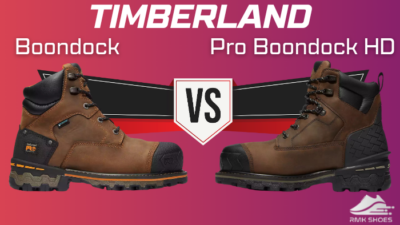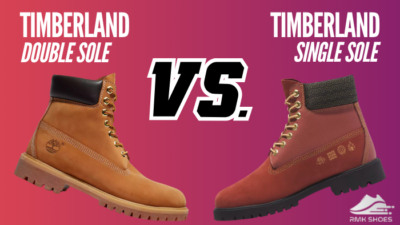I do enjoy wearing Japanese and American shoes. But when the options get tapered, choosing the ideal pair is a little tricky.
With distinct shoe silhouettes and proprietary materials, the Asics and New Balance feature numerous exclusive shoes for various running needs.
Throughout this comparison, I will compare both manufacturers based on their unique techs, materials, and diverse categories to track down the ultimate brand.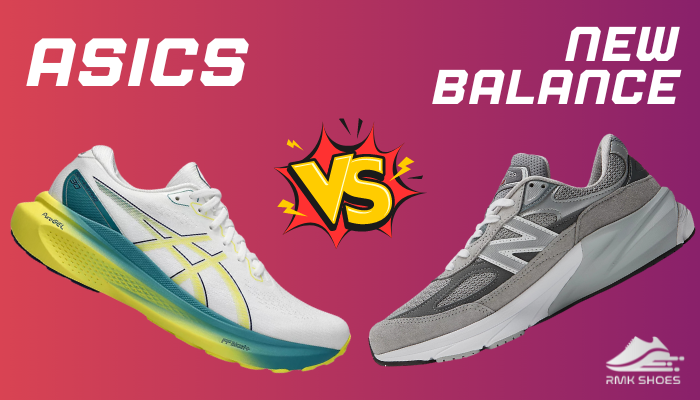
Without further discussion, let’s begin!
A Quick Brand Overview of Asics and New Balance
Japanese athletic equipment company Asics was founded in 1949 as Onitsuka Co., Ltd. Asics is an acronym for the Latin expression Anima Sana In Corpore Sano, which means a healthy mind in a healthy body.
Aiscs primarily focuses on innovation, technology, and performance for manufacturing the ultimate goods for athletes.
Though Asics is best known for its running shoes, it also offers a wide range of lineups and models for different running styles, distances, and terrains.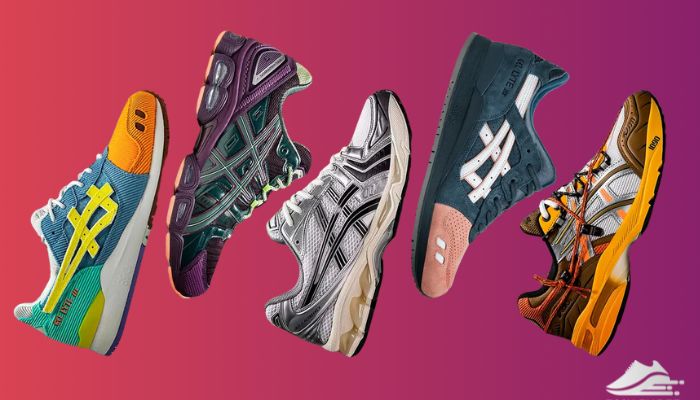
Conversely, the American footwear manufacturer New Balance was founded in 1906 by an Irish-American cobbler, William Riley.
New Balance shoes primarily focus on high-quality materials along with a secure fit, support, and comfort.
Like the Asics, New Balance also offers a wide range of shoe categories, such as running shoes, walking shoes, and lifestyle sneakers.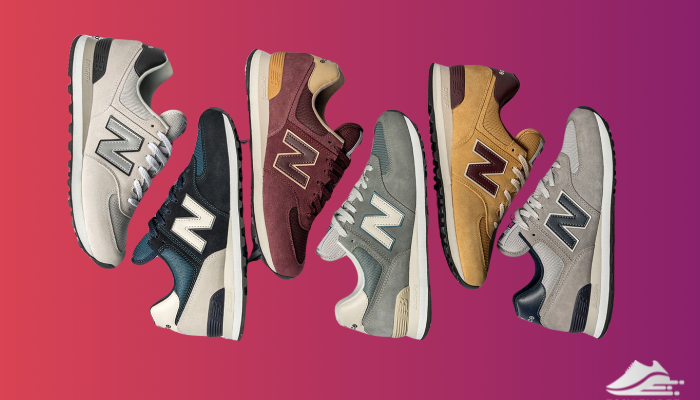
Some of the most popular models from New Balance are New Balance 990v3, 550s, 992, 993, and 990v4.
There are also prominent models from Asics, such as ASICS GEL-LYTE™ V, ASICS EX89, GEL-SONOMA, ASICS GEL-KAYANO, and ASICS GEL-LYTE.
Attribute Comparison of New Balance and Asics
Due to the distinct brand origin and culture, both brands have unique materials and design patterns.
While both manufacturers share similar techs, they also utilize completely renewed equipment for their shoes.
So, let’s compare the facts and characteristics to find out the similarities and dissimilarities.
| Attribute | New Balance | Asics |
|---|---|---|
| Brand Overview | American brand with roots in athletic footwear, offering a wider range of styles and technologies | Japanese performance running brand known for stability & high-tech cushioning |
| Colorways | More muted and subdued color palettes | Bold and vibrant colors with contrasting accents |
| Upper | Mesh, Hypoknit, engineered fabrics, leather, and suede | Mesh or engineered knit uppers |
| Insole | OrthoLite or FuelCell insoles | OrthoLite insoles |
| Midsole | Fresh Foam and FuelCell technology | FlyteFoam and Gel cushioning system |
| Outsole | Durable rubber | AHAR (Asics High Abrasion Rubber) |
| Comfort | Comfortable and supportive | Plush and cushioned |
| Fit | True-to-size | True-to-size |
| Traction | Varies depending on the outsole design | Excellent traction on dry and wet surfaces |
| Toebox | Wide | Narrow |
| Durability | Decent durability with an average of 300-500 miles | Extremely durable, some models last 450-500 miles |
| Versatility | More versatile | Focused on performance running |
| Breathability | Good breathability but highly depends on upper materials | Excellent breathability |
| Lacing System | Traditional or asymmetrical lacing systems | Traditional lacing system |
| Overall Weight | Lightweight | Slightly heavier |
| Price Range | $70-250 | $55-250 |
Primary Differences Between Asics and New Balance
Undoubtedly, both manufacturers offer a wide range of shoe lineups for various activities. However, there are some noticeable differences in techs and overall shoe silhouettes.
Moreover, both brands manufacture various shoes for people with medical conditions.
For instance, New Balance Fresh Foam X 1080v12 and ASICS GT 2000 11 are highly preferable for plantar fasciitis and flat feet because of cushioning, arch support, and spacious toe box.
Let’s compare the characteristics of both brands to understand their divergences.
1. Diverse Shoe Categories
Asics is widely known for its diverse shoe categories. There are some Asics shoes, from the marathon track to the wrestling mat.
New Balance is not far behind.
Though New Balance started the journey as an arch support provider, it became famous as a sneaker manufacturer with the Trackster shoe (released in 1961).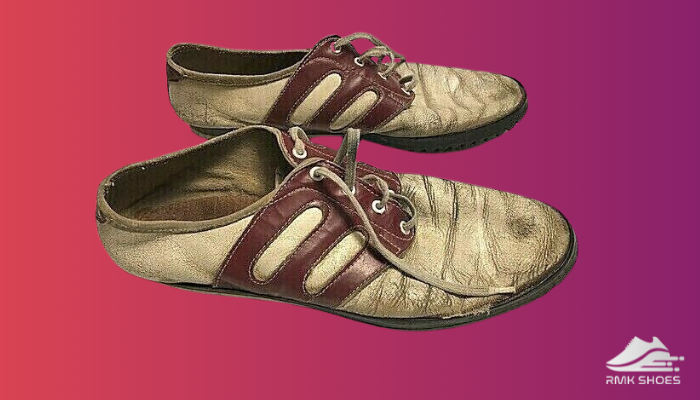
Whether you’re a professional runner or looking for a casual shoe, Asics and New Balance have something for everyone.
Following is a table of the most prominent shoes of both brands:
| Category | Asics | New Balance |
|---|---|---|
| Stability running shoes | Gel-Kayano 28, GT-2000 10, Gel-Kayano Lite | Fresh Foam 860v12, Fresh Foam Vongo v5, FuelCell Prism EnergyStreak |
| Cushioning/neutral running shoes | Gel-Nimbus 24, Gel-Cumulus 23, Gel-Quantum 360 | Fresh Foam 1080v11, Fresh Foam Beacon v3 |
| Trail running shoes | Gel-Fujitrabuco Sky, Gel-Venture 8, Gel-Sonoma 6 | Fresh Foam More Trail v1, Fresh Foam Hierro v6, Summit Unknown v3 |
| Racing shoes | MetaSpeed Sky, MetaRacer Tokyo, Gel-DS Trainer 26 | FuelCell RC Elite v2, FuelCell 5280, FuelCell Rebel v2 |
| Walking shoes | Gel-Contend Walker, Gel-Quickwalk 3, Gel-Excite 8 | Fresh Foam 1165, 847v4, 577v5 |
| Training shoes | Gel-Quantum 180, Gel-Craze TR 4, Gel-Fit Sana 4 | Fresh Foam 880v11, Fresh Foam Roav Tee Shirt, Fresh Foam 1080v11 |
As you can see, for each category, both manufacturers offer multiple shoe models, and most importantly, the divergence of materials is also visible.
2. Technology and Material
From toe to heel, both manufacturers use proprietary materials to produce the best sneakers for all sorts of indoor and outdoor activities.
Following are the different types of Asics’s technologies and materials:
| Asics’s Technology | Description |
|---|---|
| Gel Technology | Visible gel for shock absorption and smooth transition |
| FlyteFoam | Lightweight and responsive midsole foam |
| GUIDANCE TRUSSTIC | Stabilizing plate under the midfoot |
| OrthoLite Insoles | Breathable and moisture-wicking insole |
| AHAR Outsole | Durable rubber with good traction |
Similar to the Asics, New Balance has its unique tech and equipment. Remember, the materials vary depending on the shoe models and lineups.
Following are the different types of New Balance technologies and materials:
| New Balance’s Technology | Description |
|---|---|
| Fresh Foam | Proprietary midsole foam for extra cushioning and responsiveness |
| FuelCell | Nitrogen-infused foam |
| ABZORB and N2 cushioning | Shock-absorbing materials for smooth transitions |
| OrthoLite or REVLite Insoles | Comfortable and moisture-wicking insole |
| Vibram MegaGrip Outsole | High-performance rubber outsole |
Additionally, both brands share some similar materials, such as various mesh and knit fabrics for upper construction.
For some specific models, they often prefer recycled materials to ensure sustainability.
Both brands also utilize reflective materials in some models to increase low-light visibility.
For instance, Asics uses the Lite-Show for Asics Cumulus 25 and New Balance 237 Reflection Eclipse, which also features similar reflective materials.
To understand the differences between two models of the same brand, check out the comparison of Asics Novablast 3 and Nimbus 25.
Asics’s materials and techs are best for stability, shock absorption, and longevity. Contrarily, New Balance’s techs and materials are good at responsive and bouncy rides.
3. Breathability and Cushioning
Though the breathability highly depends on a particular shoe’s upper and insole materials, there are some common attributes to compare both brands’ overall breathability.
Blending the Mesh or engineered knit uppers and OrthoLite insoles, Asics shoes are incredibly breathable.
While the mesh upper allows maximal airflow, the OrthoLite insoles keep your feet cool and assist in wicking moisture away.
The Hypoknit upper of New Balance shoes provides moisture-wicking and breathability for long distances.
However, the Gore-Tex models are not breathable due to the waterproof materials.
Asics shoes are vastly known for extraordinary cushioning thanks to the FlyteFoam and proprietary Gel technologies.
Flytefoam technology is extremely durable and lasts longer than most midsole foams.
Moreover, the visible Gel offers great shock absorption and ensures a smooth transition.
On the contrary, New Balance utilizes the Fresh Foam and FuelCell technology for the shoe midsole. This FuelCell is lightweight, like the Flytefoam of Asics, but more responsive.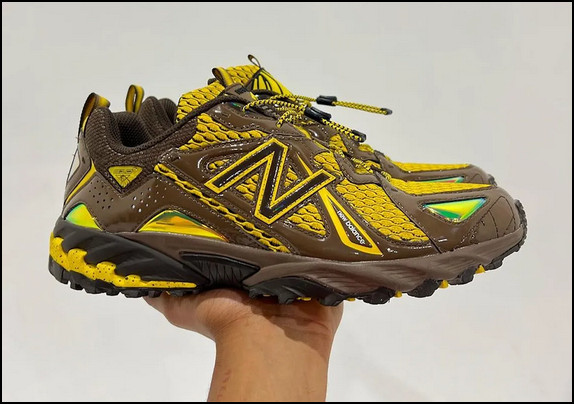
To be frank, the cushioning of both brands is highly related to the specific shoe models.
In short, most Asics shoes are highly breathable and offer maximal cushioning, while the New Balance shoes are lightweight and responsive.
4. Performance & Durability
It’s hard to differentiate two brands’ overall performance due to numerous models and lineups.
Fortunately, some general characteristics make them comparable.
For instance, Asics shoes focus more on stability and shock absorption, making them suitable for high-mileage runners, overpronators, and comfy seekers.
More precisely, the Asics GEL-KAYANO shoes are designed for stability with support and durability in mind, and the GEL-NIMBUS shoes are best known for their plushness and incredible stability for neutral runners.
New Balance, on the other hand, focuses more on a blend of responsiveness and cushioning with a bouncy and propulsive feel.
For example, the Fresh Foam X 1080v13 perfectly combines reliable comfort and high performance.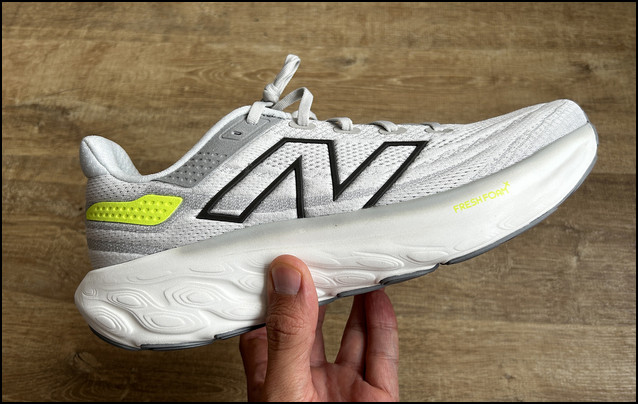
Are you a lifestyle enthusiast?
If so, check out the differences between the Asics and Under Armour to pinpoint the most stylish and versatile shoes.
Personally, I found the New Balance shoes are more versatile and suitable for everyday wear as well as race day.
But what about the durability?
Both brands utilize the most durable materials, from the upper construction to the outsole.
As a constant user of New Balance Fresh Foam X 1080v13 and Asics Gel-Nimbus 25 shoes, I must admit that Asics shoes last longer than New Balance shoes.
Let me justify my resolution.
After running more than 300 miles on my Nimbus 25, it still looks like a new pair, while the 1080v13 already shows some cracks after running 200 miles.
This vast difference is due to the long-lasting Gel technology and AHAR rubber outsole.
For New Balance lovers, there is still some hope. Most New Balance shoes offer decent durability and can easily tolerate 300-500 miles, even after running on rough terrains.
Undoubtedly, the Asics shoes are best for durability and high mileage (more than 500 miles for some high-performance shoes). Contrarily, New Balance shoes perfectly blend performance across comfort and responsiveness.
5. Fit, Comfort and Stability
Unquestionably, Asics shoes generally offer a narrower toe box and snugger midfoot. The mesh upper hugs the feet, and there is little room to move the feet.
Due to this narrow structure, the Asics shoes are preferable for people with narrow or small feet or severe foot conditions.
Fortunately, some models like ASICS GT-2000 12 are also available in wide (2E) and extra wide (4E) sizing, meaning there are options for people with wide feet.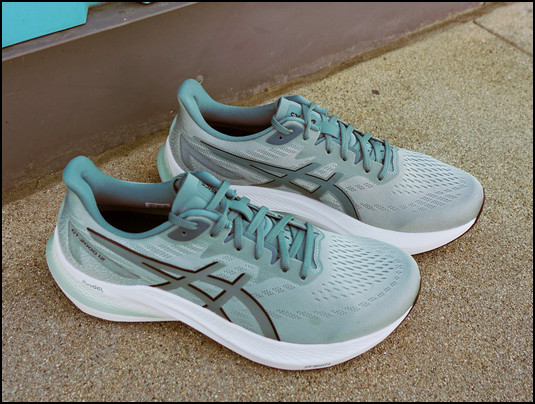
Conversely, New Balance shoes offer a wider toe box and roomier fit, making them preferable for people with wider feet and bunions.
Asics have several lineups dedicated to extensive cushioning like Nimbus. You will also find some firmer shoes that are best for tempo runs, like the Novablast.
If comfort and more cushioning are your concern, you can try Asics and Hoka One One shoes.
Due to the signature Gel technology, most Asics shoes excel in plush and cushioned comfort.
The Nimbus and Kayano shoes feature better shock absorption and energy return, making them best for high-mileage runners.
New Balance shoes are the perfect example of a balanced and responsive cushion.
Blending the FuelCell and Fresh Foam, these shoes deliver a lighter, springier feel. Moreover, there are some reputed models (1080v13) with exceptional plushness.
In terms of stability, Asics is the king.
Several innovative technologies assist in achieving this ultra-level stability. For instance, the resin TRUSSTIC saves the sole from twisting during movement and ensures additional stability.
Moreover, the HEEL CLUTCHING and Duomax technology enhances stability and performance.
However, New Balance shoes aren’t far behind.
Utilizing the wider platform and S Curve design, New Balance shoes offer a decent level of stability in most scenarios.
The heel strikers can take advantage of the significant heel flare in New Balance shoes, which prevents excessive inward rolling.
Asics shoes offer superior stability, a snug fit, and premium cushioning, suitable for long-distance runs and narrow feet. New Balance shoes have a more roomier toe box, balanced and responsive cushion, and decent stability.
6. Price and Significance
The New Balance and ASICS shoes come at various prices, such as affordable, entry-level, and premium.
After comparing all the lineups of both brands, I found both offer a very competitive price point for their running shoes.
However, compared to the Asics shoes, New Balance shoes are more economical.
For instance, while the METASPEED EDGE+ costs around $250, the similar-performing FuelCell SuperComp Elite v3 costs only $185.
But there is a twist: Asics has a very low-end shoe for wrestling (MATFLEX 6), which costs only $55.
Regardless of the price point, both manufacturers offer the best value for your money.
New Balance is the winner in this section due to its economical price range.
Pros & Cons of New Balance and Asics
Now that you know both brands’ important and non-crucial aspects, it’s high time to finalize your purchasing decision.
But before settling, check both manufacturers’ advantages and disadvantages to track down the most appropriate pair for your daily running needs.
NEW BALANCE
- »Wider toe box for a roomier fit.
- »More versatile with a wider range of styles.
- »Lighter than Asics shoes.
- »More affordable.
- »Less cushioning than the Asics.
- »Lack of high-performance models.
ASICS
- »Excellent cushioning and stability.
- »Extremely durable construction.
- »Wide range of lineups and models.
- »Good traction on various surfaces.
- »Narrow toe box.
- »Expensive than New Balance.
Asics Vs New Balance: Which One is the Optimal Pick?
While choosing the best shoe from two reputed manufacturers, the most optimal pick highly depends on individual preferences, foot shape, and intended use.
However, if you prioritize stability, support, maximal comfort, and plush cushioning, the Gel technology and FlyteFoam of Asics shoes are preferable.
Asics shoes also excel in longevity and offer a traditional running shoe aesthetic.
On the contrary, opt for the New Balance shoes if you prioritize a broad range of styles, versatility, roomier fit, and a lighter and more responsive ride.
Moreover, in case you’re on a tight budget, choose New Balance shoes, as they typically cost less than Asics shoes.
Frequently Asked Questions
Which one is better, ASICS or New Balance?
Both brands have some great shoes for various needs and styles. But ASICS is more suitable for people with narrow feet, and New Balance is preferable for people with wide feet. Moreover, ASICS shoes feature additional cushioning, and the New Balance is firmer.
Does ASICS fit like New Balance?
In terms of fit, both brand’s shoes are true-to-size. However, the silhouettes of New Balance have a wider toe box, while the ASICS feature a narrow toe box. You should consider sizing up for ASICS shoes if you’ve wide feet.
How do Asics fit compared to the New Balance?
Due to the narrower toe box, Asics shoes fit more snugly than the New Balance shoes. But if you have wide feet, Asics shoes may run small, so you should opt for a half size up while choosing the Asics shoes.

